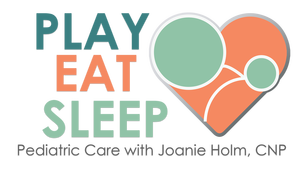|
Prairie Doc Perspectives can be found in the following newspapers. If your local paper doesn't carry Dr. Holm's column, please suggest that they contact us at [email protected] and we'll add them to our distribution list.
Mrs. B. started having a leaky bladder after her third child, notably whenever she laughed heartily. The problem worsened as she aged, and by the time she was in her 60’s, she was wearing a pad purchased at the local pharmacy. Mrs. B. finally came in to the doctor for help and asked about medicines she had seen advertised on TV and in magazines that promised to help prevent incontinence. The doctor first referred her to physical therapy to help her learn pelvic muscle exercises and, after a second patient plea, also prescribed the medication requested. The patient didn’t do the exercises but took the medicine which was quite expensive. Over the next three months she noted some minimal improvement with leaky bladder, but she still needed pads, and she began experiencing other problems. They were side effects of her incontinence medication and included constipation, dry eyes and mouth, blurry vision, insomnia, headaches, and depression. She had also recently fallen several times.
This is not an uncommon story. About one third of all women over 60 experience some level of urinary incontinence; this is twice as often as in men. Incontinence in women is generally the result of previous pelvic surgery, childbirth, and/or menopause. In men, it is generally the result of benign or malignant prostate growth blocking the urethra and bladder exit, which can cause an over-expansion of the bladder. If the dilation persists for too long, this, in turn, can cause loss of bladder contracting strength and worsen the incontinence problem. In men, it is important to remove the blockage by either shrinking the prostate with medication or surgically opening the pathway before the bladder is over-expanded for too long. In women, the medications are much less helpful and have safety issues, especially in older women. The best thing women can do is to start with pelvic floor muscle strengthening exercises and the sooner the better. Also, there are bladder training techniques, pelvic surgeries, and even bladder stimulation devices that can help. Experts advise slow tightening and relaxing the pelvic floor muscles 200 times a day . . . whenever you think of it. An excellent reminder is to make it a habit of tightening the pelvis whenever you smile, and smile often. That would help women and men alike. Bottom line: especially in women, medications for incontinence are often only marginally helpful and carry with them hefty side effects and cost. Pelvic floor muscle strengthening exercises are more effective than meds, without side effects, inexpensive, and underutilized. Do it with a smile so you can laugh without worry. by Richard P. Holm
The first indication of my having glaucoma came when I was at the eye doctor for a regular checkup. It was discovered by machine-testing that I had lost peripheral vision in my left eye. Loss of peripheral vision is a sign that glaucoma might be occurring, and indeed, when they measured the pressure within my eyes, it was increased on the left. Before that, I had no idea something was wrong. An estimated three million people in the U.S. have glaucoma; half of which have no idea something is wrong, and 120,000 become blind as a result. Glaucoma is the second leading cause of blindness in the world, especially for those coming from African origins. Treatment is available once the condition is discovered, so the best preventive move is to get routine glaucoma testing. Glaucoma causes peripheral vision loss and preserves central vision until late in the disease. Central vision is that concentrated view we have of the object at which we are staring. It is the eye-of-the-needle into which we are trying to put the thread; the subtle smile of the mysterious woman about which we are painting; the target at which we are aiming our arrow. Say it again, early on, central vision is preserved in glaucoma. Just because our central vision is retained until late-stage glaucoma, that doesn’t mean it isn’t causing problems. Peripheral vision is important, allowing us to see the shooting star that flashes suddenly from the eastern horizon while we’re staring at the big dipper; to see the boy that might jet out from behind a car in pursuit of his ball while we drive down the road; to see the guy across the room who has captured our attention, secretly watching him without letting him know. For comparison, macular degeneration causes the opposite kind of vision loss. More specifically, it results in a loss of central vision while preserving peripheral vision. Both conditions affect the retina, the blanket of nerves covering the back side of the eye, which, like a camera, captures the image of an autumn moon rising above a South Dakota lake, a wind-wave of grass moving on a prairie hill, or the surprised face of discovery on a visiting grandchild. Take home message: people don’t realize there is peripheral vision loss resulting from glaucoma until the damage has been done. Get in to have routine eye testing. You may have no idea something is wrong. Years ago, in another state, a physician-friend of mine became addicted to opioids, also known as narcotics. She was one of the smartest doctors I knew: ethically based, raised in a loving family, had children and a spouse. I think it started with a sports injury and pain medicine. Eventually she was divorced, which likely had something to do with her addiction. She said the opioid had a hold on her, and she just couldn’t stop. Years later she told me that it wasn’t difficult to acquire the prescription medicines, but somebody must have been watching, because she was caught after three years with an accelerating need for higher doses.
My own experience with opioid pain medicines, after pancreatic cancer surgery in May of 2017, was colored by my having observed my friend’s struggle. Physicians are a high-risk group and addiction to narcotics was NOT something I would accept for myself. Despite that determination, the pain was bad, lasted for three or four months, and required those darn pain medicines for a prolonged period. Two months after the surgery, still needing pain meds, I better understood how people could get addicted to narcotics. In retrospect, I know that at least some of the discomfort I was experiencing had to be secondary to withdrawal from the pain medicine itself. One definition of addiction calls it “a condition resulting when a person ingests a substance (like oxycodone, alcohol, nicotine) or engages in an activity (like gambling, shoplifting, internet gaming) that might seem pleasurable but the continuation of which becomes compulsive and interferes with ordinary responsibilities such as work, relationships, or health”. Experts tell us addiction isn’t always due to a physical dependency, a search for pleasure, or a flaw in moral character. Rather it is often a reaction to escape stress. Methods to help people find release from addictive and compulsive behaviors are myriad but the most successful seem to be faith-based, associated with counseling and emotional support, and provided over a prolonged period (like 16 months). For me, getting off opioid pain medicines was accomplished by gradually tapering off the stuff while increasing exercise, performing creative activities, finding interests outside myself, while opening my heart to spiritual sustenance. What also benefited me was the support and companionship of my wife. I learned that surviving with comfort and escaping the compulsion and destruction of opioid addiction can be done, but requires doing the work as well as making the choice to get and receive help. |
Archives
July 2024
Categories |
 RSS Feed
RSS Feed


